#Anders Lustgarten
Explore tagged Tumblr posts
Text
Tag 3 Insel Møn-Steilküste und Kreidefelsen
Matthias hat heute im Obergeschoss geschlafen und da die Sonne ihm morgens aufs Dach brezelte und auch die Vögel zu den Frühaufstehern gehören, war die Nacht etwas kürzer. Statt 08:30 Uhr wurde nur bis 07:00 geschlafen 😉Dafür blieb länger Zeit für unser ausgiebiges Frühstück in der Sonne bei sehr angenehmen 20 Grad.
Heute nun die wohl bekannteste und populärste Attraktion der Insel - die Steilküste mit ihren weißen Kreidefelsen. Nicht, dass wir keine Kreidefelsen kennen würden…aber wir sind gespannt, ob sie wirklich weißer sind als „unsere“. Also wurden die Räder gesattelt, vom Campingplatz in Keldby führt der Ostseeradweg N8 direkt zu „Møns Klint“
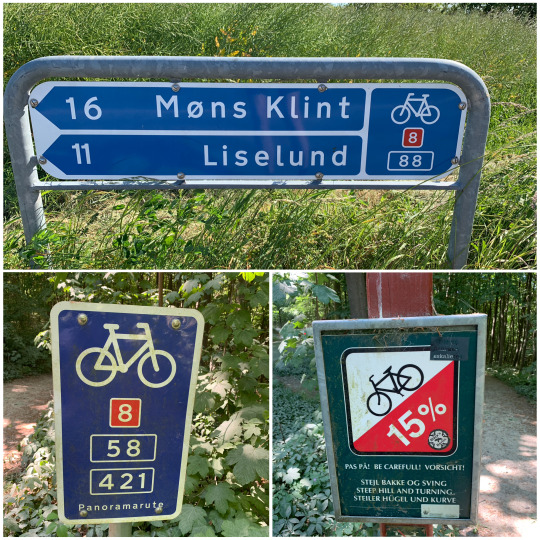
Der Weg war größtenteils gut asphaltiert, das es steil wird, kann man sich ja denken, wenn man Richtung Steilküste fährt (Augen auf: STEIL -Küste kommt von steil bergauf 🤣) nur dass auch noch der Wind 16 km von vorne pustet, war nicht ganz geplant 😜Dafür ging es zurück (fast) nur bergab mit prima Rückenwind, immerhin besser als andersrum 👍. Und so sind wir gefahren:

Hinweg Keldby - Råbylille - Busemarke - Mons Klint (15km, 190hm, durchschnittliche Geschwindigkeit 12,9 km/h)
Rückweg Mons Klint - Liselund - Borre- Elmelunde - Keldby (18 km, 120hm, durchschnittliche Geschwindigkeit 16km/h - gefühlt waren wir viel schneller mit teilweise fast 50 km/h…aber es ging eben doch auch ab und zu berghoch 😅)
Die Kreidefelsen sind schon sehr beeindruckend, deutlich höher als unsere, naja ob nun weißer 🤔 lässt sich drüber streiten, auf jeden Fall deutlich fester. Während sie bei uns mit etwas Feuchtigkeit gleich wie Schmierseife ist, konnte man hier am Ufer sogar auf der nassen Kreide gefahrlos laufen. Und die Feuersteinbänder in der Kreide waren sehr gut zu sehen, Werkzeug hatten wir leider nicht dabei, sonst hätte das ein oder andere Fossil wohl dran glauben müssen 😅 Über eine gut begehbare Holztreppe (497 Stufen pro Richtung 💪) ist das Steilufer gut zu erreichen. Pluspunkt für Møn, dafür gibts hier einen viel umworbenen Königinnenstuhl, der allerdings mit unserem Königstuhl nicht mithalten kann, erst recht nicht mit der neu gebauten „goldenen Klobrille“ = Skywalk 🤣. Aber summa summarum sehr schöne Felsen, wir haben es einmal mehr genossen, am Strand zu sitzen und dem Wellenrauschen zuzuhören👍
Königinnenstuhl 😅:

Treppe zum Strand:

Unten angekommen 👍
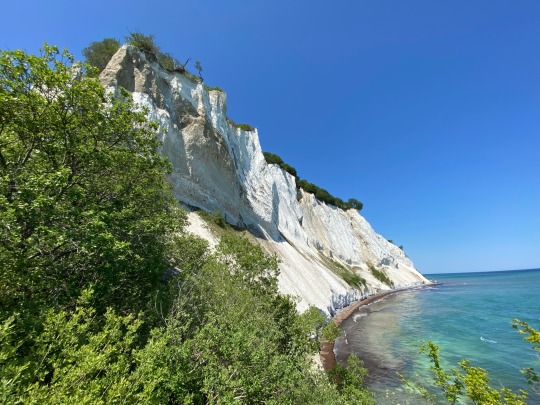

Feuersteinbänder:

Auf dem Rückweg machten wir einen kleinen Zwischenstopp mit Spaziergang, Käffchen und Rhabarberkuchen im romantischen Garten von Liselund. Im 18. Jahrhundert als Lustgarten angelegt, darf natürlich das Lustschloss nicht fehlen, von dem man einen prima Blick in den wunderschönen Garten hat.
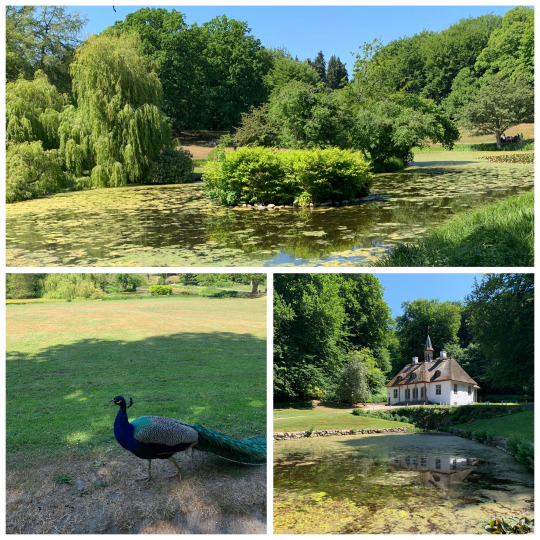

Fast mit Rückenwind vorbei gerast und dann doch noch abgebremst - auf der linken Seite lag die Kirche von Elmelund. Eigentlich ja wieder nur ne Kirche aber inzwischen hatten wir uns zu den schönen Kalkmalereien der Kirche in Fanefjord belesen und folgendes herausgefunden: Die Wandmalereien stammen vom sogenannten „Elmelunde-Meister. Der Elmelunde-Meister war ein namentlich nicht bekannter Maler, der um etwa 1450 auf der dänischen Insel Møn in den Kirchen von Elmelunde, Keldby und Fanefjord weit über Møns Grenzen hinaus berühmte, beeindruckende Wandmalereien hinterlassen hat. (Wikipedia). Was lag also näher, als sich die älteste Kirche Mons mit diesen wieder schönen Kalkmalereien anzusehen.
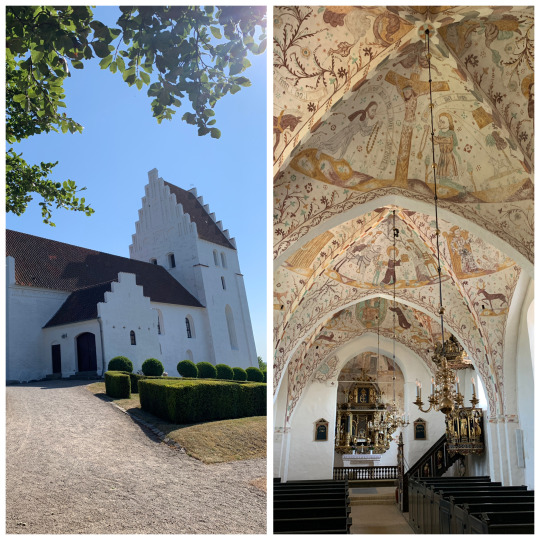
Die restlichen Kilometer ließen wir uns ganz einfach zur Silberhummel pusten und genießen nach diesem wunderschönen Tag jetzt entspannt die Abendsonne 🚴♀️🚴♂️🌭🍷🌅🤩
0 notes
Text
Review:The Secret Theatre by Anders Lustgarten
So last year I saw TST at the Sam Wanamaker Theatre and I found my review for it just now. (Below cut).
The Secret Theatre by Anders Lustgarten
As a second year student with deadlines ominously marching over the horizon, Sir Francis Walsingham’s vast swathes of paper (his filing cabinets are ingeniously built into the set itself) hit a little close to home. The Secret Theatre is about more than one man’s exploding in-tray, however.
Anders Lustgarten’s play is allegory first, tragedy second, with an ending to match. If you prefer your allegory subtle and implied, this is not the play for you. Lustgarten is as subtle as a shoe to the face. This isn’t necessarily a problem, as much of the allegory already speaks for itself: spies, asylum seekers, martyrs, beheadings, zealots, propaganda, mass murder- all of these things are inherent to the historical source material. Parallels are therefore easily established. Nevertheless, there are moments when characters feel more like mouthpieces for the playwright than people with their own thoughts. Sir William Cecil’s line “If you tax the bankers, they’ll leave” is probably the biggest example of this, being a modern soundbyte word for word.
The strength of this play lies not in the messages of its allegory. The arguments that torture doesn’t elicit proper information, that martyrdom inspires recruitment to the cause, that unscrupulous politicians take advantage of fears over immigration, that surveillance spreads fear and mistrust, are old and surprisingly safe. The strength of this play lies more in its characters coming to such realisations. The look on Walsingham’s face, when a Catholic torture victim triumphantly declares how martyrdom boosts militant Catholicism, is far more powerful than the line itself.
A sense of relentlessness and hopelessness pervades this play, in keeping with Lustgarten’s overarching theme: that authoritarianism poisons everything it touches. The setting is highly evocative: the play’s first and current run (until 16 December) is at the beautiful Sam Wanamaker Theatre. The auditorium is small and compact and the thrust stage therefore makes the action very intimate. All of the lighting onstage is done with candles, lit and doused throughout the play, so the symbolism of “working in the shadows” is made very clear (at one point, Queen Elizabeth’s massive skirt swept across a candle flame and there was a collective intake of breath from the audience). The gilded panelling and painted ceiling of the theatre are alone worth a visit to the theatre and juxtapose excellently the beauty of Elizabethan culture with the ugliness of the play’s violent politics. There is something particularly haunting about the sight of a noose when it’s swinging from a ceiling painted with cherubs. The use of tiny paper models to represent the Armada and the city of London is inspired as it is highly symbolic of the main characters’ power, as they tower over society, but also the distorting effect of paranoia upon reality.
The cast give excellent performances. Aidan McArdle as Walsingham has to convey a huge range of passionate emotion as well as master the moments of dry and quiet humour that encapsulate the character’s shrewd and cynical observations. The only hitch in his otherwise entirely believable performance is that in Act One he moves around the stage with the vim and vigour of someone who doesn’t have so much as the common cold, let alone debilitating and untreated health conditions, random bursts of coughing aside. This hitch is gone in the second act, when the disintegration of Walsingham’s physical and psychological health is visceral and harrowing.
In the hands of an actor of lesser skill, the role of Queen Elizabeth I in this play could easily become one-dimensionally catty, but Tara Fitzgerald keeps the character as venomous as she is despairing. Tara Fitzgerald is aided by the fact that, refreshingly, the production refuses to follow Hollywood’s recent lead in sexing up history: Elizabeth’s dresses are magnificent, but the wig and white face paint are there to be authentic, not to aesthetically appeal to the viewer. All of the play’s violence serves a narrative and thematic purpose rather than simply shock value (looking at you, Game of Thrones). This gives the play a weight and maturity beyond your bread and butter thriller.
Much has been made of how unconventional this interpretation of Elizabeth I is: foul-mouthed, vulgar, self-centred and spiteful. However, no portrayal of Elizabeth in the past forty years, no matter how reverent, has omitted her famous temper and often irrational jealousy. The suggestion that Elizabeth I was actually sexually active is also not new, but used in this play for the theme of state propaganda. To the play’s credit, the portrayal of Elizabeth as foul-mouthed and violent is more of an exaggeration or an extrapolation of historical record rather than pure invention, as some reviewers of the play have suggested. The real Elizabeth did use “Jesus!” as an expletive and the story goes she once threw her shoe in Walsingham’s face (I was rather hoping to see this play out onstage, but given the number of candles it probably wasn’t a good idea). Elizabeth’s use of bad language also has motive: to gain the upper hand in her power dynamic with Walsingham through calculated degradation and humiliation. The acrimonious working relationship between the two, more toxic than any 16th century medicine, makes for the play’s best scenes.
The play’s worst scenes suffer from the flat characterisation of Lady Sidney, Walsingham’s daughter, who is two things in this play: angry and sad. This subplot is intended to show the personal cost caused by political unscrupulousness, but there’s never any sign of familial love and affection between father and daughter, meaning that the estrangement feels inevitable and therefore not much of a sacrifice. The scenes feel like they were written last minute and in a hurry, so the play and the ending suffers.
This play can be found in digital and hard copy on Amazon and I recommend it to anyone interested in history, the War on Terror, current affairs and good old-fashioned tragedy. It does not require prior knowledge of the period to enjoy, though if you are knowledgeable of the historical figures and their lives, there is much irony and nuance to be spotted and appreciated, like little Easter eggs. Licence may have been taken with the events, but historical purists (such as myself) can appreciate this play far more than they can most media set in the past.
#theatre#my writing#non fiction#Elizabeth i#the secret theatre#Sir Francis Walsingham#anders lustgarten#tara fitzgerald#feminist history#feminism#history#aidan mcardle#theatre reviews
2 notes
·
View notes
Photo










pictures from The Secret Theatre
36 notes
·
View notes
Photo

21 Febbraio alla Casa della Musica “Lampedusa” di Anders Lustgarten Lampedusa di Anders Lustgarten con Donatella Finocchiaro e Fabio Troiano Regia di Gianpiero Borgia 21 FEBBRAIO ORE 21 -
0 notes
Text
7 Acts of Mercy - RSC

“Bold, hard-hitting and political this new play by Anders Lustgarten, directed by Erica Whyman, fuses Caravaggio painting the canvas which inspired the title with contemporary Liverpool and a family drama of a dying ex docker teaching his grandson about social values through the medium of art history. It sounds unlikely, but works brilliantly, examining the meaning of compassion and charity in our lives and how art can and should be a means for social outrage and change.”
(source)
1 note
·
View note
Text









“We all come from the sea and back to the sea we will go. The Mediterranean gave birth to the world.” - Anders Lustgarten
Bang Chan -> Mediterranean Sea
.・゜゜・
Requested by -> @j-0ne25
#hiii tan! thanks for the request <33 I hope you like it :)#skz#stray kids#bang chan#staysource#userbeepls#usersa#usertsu#userwinterfloral#usermissye#bitsforkitts#adriblr#<3#juiceofmoons#juiceofmoons-requested#this one was really fun and perfect for channie <3
175 notes
·
View notes
Text
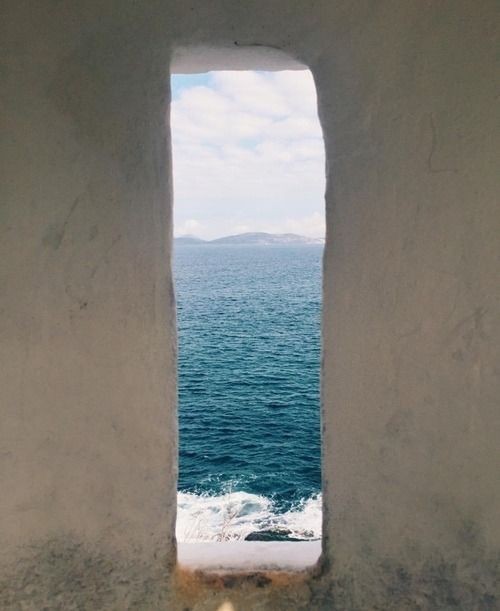
"We all come from the sea and back to the sea we will go. The Mediterranean gave birth to the world."
Anders Lustgarten, Lampedusa
33 notes
·
View notes
Text
Frederick and Mary Magdalene
Just came across this piece of info in an essay about Watteau which set I-
After the conclusion of the seven years war, Frederick decorated a room (probably in his own apartment) in the Potsdam city palace with 11 paintings, of which four Watteaus, five Lancrets, one Pater -- all fêtes galantes (courtship parties), which in Frederick’s younger days was his favorite genre to hang in private rooms -- AND one copy of Correggio’s Penitent Magdalene (or Magdalene reading/in meditation), made by a Berlin painter Romandon in 1695.
It’s such a deliberate and meaningful arrangement, and such a sight to imagine, that amongst the lovely country scenes by Watteau and pupils, there’s a hermit Saint Mary Magdalene, retreating into a secluded place to spend the rest of her life alone... In a word, I believe that Fritz was full-on identifying with her.
If we take the traditional (read: medieval) backstory of Magdalene before she was converted - that she led an extravagant life, then we can perhaps even interpret this arrangement further: that in this room overlooking the Lustgarten-turned-parade-ground in front of the palace, he, like her, devoted himself into the pursuit (and pleasure) of study, yet was always surrounded by faded dreams of a past filled with lost and irrecoverable love.
The Potsdam city palace was destroyed in 1960. The copy of Correggio’s Magdalene is now lost (I assume the original is lost too, since i can’t find pictures of it after the 1910s?), but I’ve found a few copies and prints to illustrate what it may have looked like:
--
Engraving of Mary Magdalene reading in the desert, Johann Heinrich Friedrich Ludwig Knolle (x)

A Meissen porcelain plaque from 19th century, after the Correggio in Dresden (x) (i’m just impressed with the fact that this is porcelain)

A 1854 photo reproduction of the painting, in The choicest master-pieces of the picture-gallery of Dresden. (x)

Pompeo Batoni, After Correggio (if im not mistaken Batoni added the skull in there, and her head recalls Caravaggio. it’s interesting to see that the original had neither the skull nor the crucifix, which are common in most penitent Magdelenes, but rather just a woman happily reading, with her breasts out)

Also this page from Turner’s sketchbook which I find cute (??) (x)

source:
Helmut Börsch-Supan, Friedrich der Große und Watteau, in Watteau, 1684-1721, exhibition catalogue by Graselli and Rosenberg, 1984, pp. 553-562 (x)
Matthias Oesterreichs, Beschreibung aller Gemählde, Antiquitäten, und anderer kostbarer und merkwürdigezr Sachen, so in denen beyden Schlössern von Sans-Souci, wie auch in dem Schlosse zu Potsdam und Charlottenburg [...]. 1773. A detailed description of the arts in Fritz’s three palaces. The room & the paintings in question can be seen in Nr. 547-557. (x)
#im simply shocked as to how many female figures in literature Fritz identified to...#like#we know he likes the Leda and the Swan motif#and i've seen a scholar linking him with a statue of Cleopatra at the terrace of Sanssouci#also a Flora statue at his tomb#now Magdalene#idk how often men of this period do this but#this man...#I'm curious that if he owned more paintings of a similar subject#also was this copy a war loss?#many researches to be made...#long post
29 notes
·
View notes
Text
Seven Acts Blog - Material/Process
Through reading the play for the first time the character that i was drawn to the most was Leon. 'Leon Carragher, mid seventies, A ruined castle on a hill. Once a union leader, a man of influence in the local community. Not any more. But the cantankerous forcefulness remains (pg. 31 Scene two). Reading through leon's lines I found that his character was very similar to a few members of my family, particularly my grandad. Thus Leon was my favourite character in the play and the role that I felt I would be best suited for. Compared to all of the other plays I have done in LMA, the Seven Acts of Mercy was the play that I felt the most comfortable with. This mainly due to the fact that it was set in Liverpool which meant i could use my natural accent and also i knew already about the places in liverpool such as bootle. Kirby etc… The main challenge that i was going to have would be i would be playing as a dying man in his seventies. Given that i am 20 years of age and hopefully not on death’s door, this would be the only part of the character that I believed I would struggle with.
During the auditioning process, I read up about the playwright Anders Lustgarten and watched a video that he did with the Royal Shakespeare Company explaining the plot. Once reading the basic plot I chose the scene that i thought would be best for an audition (Act 1 Scene 2), asked one of my colleagues if they would like to do the scene with me, then using the first two steps in the Chubbuck Technique, i began to think of a basic overall objective for Leon, as well as a scene objective for the audition.
1 note
·
View note
Text
The Seven Acts Of Mercey
Naples, 1606. Inside an unfinished church, a painting is emerging from the darkness. The Seven Acts of Mercy is Caravaggio’s masterpiece - and his first painting since he killed a man and fled Rome. As the artist works, he is fuelled by anger, self-loathing and his driving need to create a work that speaks of compassion in a violent world.
Playing out across a gap of 400 years, Anders Lustgarten’s visceral new play confronts the dangerous necessity of compassion, in a world where it is in short supply. 1
1 note
·
View note
Text
Radical Mischief: A Conference Inviting Experiment in Theatre, Thought and Politics
All of us involved in the University of Birmingham and RSC’s collaboration at The Other Place are excited to announce details of our forthcoming conference.
‘Radical Mischief: A Conference Inviting Experiment in Theatre, Thought and Politics’ will take place from 20-21 July 2018 at The Other Place theatre, Stratford-upon-Avon and offers an unmissable opportunity to be involved in an urgent and open conversation about what thought and theatre can do in our time.

This conference invites participants to address the most important issues of our time in an open and exciting, inter-disciplinary and sector-crossing conversation. From the financial crash to war in the Middle East; from popular nationalism to fundamental questions about the value of both art and education: we live in a bewilderingly changing world. This conference will explore new ways in which we can work together not only to define but also to respond to its many challenges.
In the spirit of the new democracy we seek to promote, this event will experiment with the traditional conference form. There will be no uninterrupted, pre-written papers; instead, there will be two provocative plenary conversations, between high-profile figures with challenging views, intended to inspire open debate. The conference will then curate a series of focused conversations in different formats, including active participation and open space technology, led by artists, scholars and conference participants.
The conference will kick off with a conversation between Emma Rice and Professor Jonathan Dollimore. The event will also feature an exciting mix of scholars, artists and journalists such as: Professor Dympna Callaghan, Nadia Latif, Professor Kiernan Ryan, Dr Catherine Silverstone, Hassan Abdulrazzak, Professor Julia Lupton, Anders Lustgarten, Lyn Gardner, Professor Peter Holbrook, Juliet Gilkes Romero, Dr Abigail Rokison-Woodall and Professor Richard Wilson.
For more information, or to register, visit: www.birmingham.ac.uk/rmc2018
#Professor Dympna Callaghan#Nadia Latif#Professor Kiernan Ryan#Dr Catherine Silverstone#Hassan Abdulrazzak#Professor Julia Lupton#Anders Lustgarten#Lyn Gardner#Professor Peter Holbrook#Juliet Gilkes Romero#Dr Abigail Rokison-Woodall#Professor Richard Wilson#RSC#Royal Shakespeare Company#university#university of birmingham#conference#discussion#seminar#articles#academics#artists#creativity#reserach#hello brum
0 notes
Text
Lampedusa - Λαμπεδουζα
Lampedusa – Λαμπεδουζα
Athens-based Theatre of the New World boldly takes in its hands a politically charged text where two souls circumnavigate the same, dead island, looking for a speck of humanity in a paperwork ocean where dues are more important than “who”. Lampedusa, by Anders Lustgarten, washes up on Greek shores, rippling on the self-absorbed waters of Thessaloniki. (more…)
View On WordPress
#Anders Lustgarten#Arghiris Xafis#Lampedusa review#NTNG#Staging Europa#Theatre of the New World#Thessaloniki#Vangelis Theodoropoulos#Xara-Mata Giannatou#ΚΘΒΕ#Λαμπεδούζα review
0 notes
Photo

The Secret Theatre opens in the Sam Wanamaker tonight - break a leg!
0 notes
Photo

HumboldtHuaca- Encuentro y Ritual en Resistencia.
Acción-ritual Sobre la exhibición de la Mallqui de la Huaca El Paraíso / Chuquitanta (Lima Norte) en el Modul 21 de Humboldtforum.
Jueves 31 de Octubre 2019 18.3h Lustgarten, Museumsinsel Berlin *Participación libre
Participa en el encuentro que conformará la resistencia cultural latinoamericana activa en Berlín con una mirada crítica a las prácticas museales, excluyentes y cosificadoras. Y en un intento por reivinidicar la descolonización del museo.
A través de diferentes manifestaciones artísticas, visibilizaremos el trabajo de asociaciones, colectivos y artistas peruanos y latinoamericanos que intentan transmitir y dignificar culturas de raíz indígena que fueron y aún hoy son sometidas por el sistema colonial, patriarcal y capitalista.
De acuerdo a la fecha del 31 de octubre, a víspera del día de los muertos, el encuentro se enfocará en rendir respeto al Ancestro de la Huaca el Paraíso, la Mallqui (¿"momia"?) Chuquitanta. Los grupos y colectivos manifestarán su posicionamiento a través de diversas acciones y performances.
Partiremos desde el Lustgarten frente a la Catedral, a las 18.30 hrs, para continuar en comitiva hasta la sala Modul21 del Humboldtforum.
Invitamos a todas las personas y colectivos interesados en apoyar y reinvidicar esta lucha a participar en el evento:
Infórmate! En humboldthuaca.tumblr.com. encontrarás más información sobre el proyecto Humboldthuaca y sobre las cuestiones críticas del Humboldtforum
Difunde! Invita a toda tu comunidad y conversa sobre el tema: facebook.com/decolonizem21
Participa! Quieres colaborar en la gestión del evento? Apoyo logístico, documentación fílmica, asistencia artística.. escríbenos con tu disponibilidad e intereses: [email protected]
Manifiéstate! Nos vemos el 31 de Octubre en Lustgarten a las 18.30h.
HumboldtHuaca es una confrontación entre Humboldtforum y las HUACAS, palabra indígena que identifica a todas las entidades sagradas en la cosmovisión andina (santuarios, templos, tumbas, momias, lugares sagrados).
Durante la invasión colonial, las Huacas fueron saqueadas (Huaqueadas) por los conquistadores y posteriormente también por los casa recompensas y científicos viajeros (como Alexander von Humboldt). De esta forma muchas piezas sagradas fueron traídas a Europa y exhibidas en los museos. Sin embargo, dentro de la propia cosmovisión, su contexto de origen, las Huacas son también las personas portadoras de conocimiento, las personas que hoy en día resisten contra culturas globalizadoras y opresoras. Qué relación tienen las Huacas de hoy con las que hace años fueron huaqueadas y traídas a Berlín?
HumboldtHuaca busca generar un espacio de diálogo crítico entre los colectivos que mantienen esa memoria viva y el museo, símbolo occidental de transmisión de conocimiento que preserva piezas fundamentales de esas culturas, pero que en pocos casos ha buscado escucharla e incluirla en narrativas de auto-representación.
Centrado en la movilización de la comunidad latinoamericana, Humboldthuaca es un paso más en una lucha que pueblos de todas partes del mundo llevan desde años combatiendo contra la perpetuación de discursos y luchas coloniales dentro de los museos.
El evento contará con la participación de los grupos: Sikuris Berlín, Grupo Luz Y Color, Asociación Cultural Kapaq Sumaq Ayllu, Unidos por la Dignidad, Chichakraft, Bloque Anticolonial Berlín, Juan Miguel Barandiaran Sánchez (representante del Museo Afroperuano de Zaña- Lambayeque, Perú), Muscae volitantes, Duo Rhaza , y muchos más.
Este proyecto es parte del Proyecto "Intervention M 21: Am Humboldtstrom – Sammeln im 19. Jahrhundert" de la Universität der Künste Berlín y el Staatlichen Museen zu Berlin – Stiftung Preußische Kulturbesitz.
DE:
HumboldtHuaca- Netzverktreffen und Ritual im Widerstand.
Aktion-Ritual zur Ausstellung des Mallqui ("Mumie") der Chuquitanta - Nord Lima im Humboldtforum.
Donnerstag, 31. Oktober 2019 18.30Uhr Lustgarten, Museumsinsel Berlin
Nehmen Sie an der Begegnung teil, die den in Berlin aktiven lateinamerikanischen Kulturwiderstand mit westlichen Museumspraktiken konfrontiert, die die Dekolonisierung des Museums ausschließen und verdinglichen.
Durch verschiedene künstlerische Manifestationen wird die Arbeit peruanischer und lateinamerikanischer Verbände, Kollektive und Künstler sichtbar gemacht, die versuchen, Kulturen indigener Wurzeln zu vermitteln und zu würdigen, die vom kolonialen, patriarchalen und kapitalistischen System vorgelegt wurden und werden.
Am 31. Oktober, día de los muertos (Tag der Toten), gedenken wir der Mallqui (¿"Mumie"?) von Huaca El Paraíso Chuquitanta -Lima. Die Gruppen und Kollektive werden ihre kritische Position in Bezug auf ihre Ausstellung im Modul 21 des Humboldtforums zum Ausdruck bringen.
Wir starten um 18.30 Uhr von Lustgarten in Prozession bis zum Humboldtforum fortzufahren.
Wir laden alle Menschen und Kollektive ein, die diesen Kampf unterstützen und rechtfertigen wollen, an der Veranstaltung teilzunehmen:
Information!Unter
humboldthuaca.tumblr.com
finden Sie weitere Informationen über das Humboldthuaca-Projekt und über die kritischen Themen des Humboldtforum.
Diffusion!
Lade deine ganze Community ein und sprich darüber:
facebook.com/decolonizem21
Teilnahme! Möchten Sie bei der Durchführung der Veranstaltung mitwirken? Logistische Unterstützung, Filmdokumentation, künstlerische Unterstützung.... schreiben Sie uns mit Ihrer Verfügbarkeit und Ihren Interessen: [email protected]!
Wir sehen uns am 31. Oktober um 18.30 Uhr am Lustgarten Museumsinsel.
HumboldtHuaca ist eine Konfrontation zwischen Humboldtorum und den Huacas, einem indigenen Wort, das alle heiligen Wesen in der Andinische Weltanschauung identifiziert (Heiligtümer, Tempel, Gräber, Vorfahren ¿"Mumien"?, heilige Orte). Während der kolonialen Invasion wurden die Huacas von den Konquistadoren und die Wanderwissenschaftler (wie A. von Humboldt ) geplündert und die heiligen Stücke wurden nach Europa gebracht und in Museen ausgestellt. In der Andinische Weltanschauung sind die Huacas aber auch die Wissensträger, die Menschen, die sich heute gegen globalisierende und repressive Kulturen wehren. Welche Beziehung haben die heutigen Huacas zu denen, die vor Jahren überfallen und nach Berlin gebracht wurden?
HumboldtHuaca versucht, einen Raum für den kritischen Dialog zwischen den Kollektiven, die dieses lebendige Gedächtnis bewahren, und dem Museum zu schaffen, einem westlichen Symbol für die Vermittlung von Wissen, das grundlegende Teile dieser Kulturen bewahrt, aber in wenigen Fällen versucht hat, es zu hören und in die Erzählungen der Selbstdarstellung einzubeziehen.
Humboldthuaca konzentriert sich auf die Mobilisierung der lateinamerikanischen Gemeinschaft und ist ein weiterer Schritt in einem Kampf, den Menschen aus aller Welt seit Jahren gegen die Aufrechterhaltung kolonialer Diskurse und Kämpfe in Museen führen.
An der Veranstaltung nehmen folgende Gruppen teil:
Fuerza Sikuri Berlin, Chichakraft, LuzYColor, Kapaq Sumaq Ayllu, Unidos por la Dignidad, Bloque Anticolonial Berlín, Juan Miguel Barandiaran Sánchez Vertreter des Afro-Peruanischen Museums von Zaña (Museo Afroperuano de Zaña), Muscae volitantes, Duo Rhaza , und viele andere! Teil des Projekts "Intervention M 21: Am Humboldtstrom – Sammeln im 19. Jahrhundert" der Universität der Künste Berlin und der Staatlichen Museen zu Berlin - Stiftung Preußische Kulturbesitz gefördert durch den Beauftragten der Bundesregierung für Kultur und Medien.
1 note
·
View note
Text
Picks of the Week - May 18, 2022
Check out these #MayLongweekend #PicksoftheWeek : @pitheatre @whitecapsfc @cirque @vancanadians @MetroTheatre @RAG_Gallery_BC @billreidgallery @VanArtGallery @starsonice @JoeInkDance @SFU_W @coERASGA @PALTheatre @MOA_UBC @museumofvan @Vanmaritime
The May long weekend is upon us, usually the unofficial kick off to summer, but this season’s weather has us hoping for at least the feeling of spring to meet these picks of the week… Capitalism: Pi Theatre is presenting the Canadian premiere of Anders Lustgarten’s extraordinary play, Lampedusa, which explores migration, Capitalism, and human connection at The Cultch’s Vancity Culture Lab until…

View On WordPress
0 notes
Text
MA Playwriting @ UoM
MA Playwriting @ UoM
Last year I moved to Manchester to do a masters in Playwriting, led by Chloe Moss, Tim Price and Anders Lustgarten. We wrote five plays over the year, with workshops held by Clean Break, Paines Plough and Box of Tricks to name a few. The masters has given me the space to refocus on what I write about, also to play with form and structure within a cohort of other writers. We were part of the…

View On WordPress
0 notes